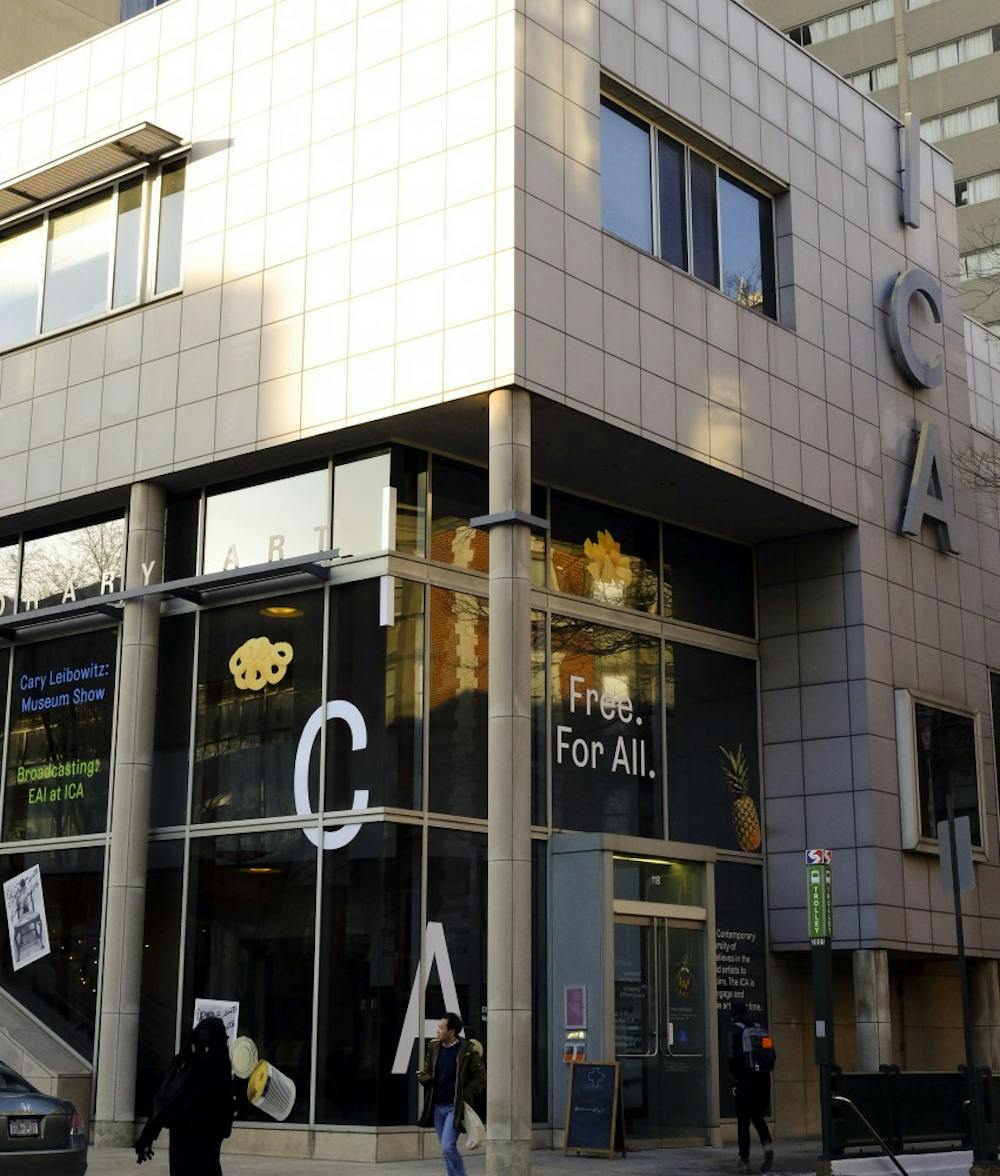For those not yet familiar with the medium–sized, used–to–be–white, glass–paneled building tucked between Urban Outfitters and Wawa down 36th, it’s the Institute of Contemporary Arts (ICA), a museum designed to introduce the university community and broader Philadelphia to what was “new and happening” in art and culture.
As a “kunsthalle,” a non–collecting museum that organizes or imports exhibitions, the ICA has grown from two staff members to 26, developing an international reputation as a leading venue for contemporary art and culture. Here are just some of the most popular exhibits over the years that have come to define the museum’s values and influence.
1943–1945: The Decisive Years
Amidst a time embroiled in controversy over which of the abstract expressionists had started action painting, the ICA made its own choice in selecting Jackson Pollock, Mark Rothko, Willem de Kooning and four other artists as the most important abstract expressionists to display. At first, the artists didn’t want to be exhibited with each other because each thought he invented abstract expressionism as a genre, but fortunately, Sam Green, then the ICA’s director, got the artists to cooperate.
Such is the dynamic that has always existed within the ICA. The artists have always been central to ICA’s exhibits and programs; they work closely with curators and provide and encourage new sensibilities, ideas, and modes of expression. Regarding artists in high esteem, ICA tries to support them by giving them the platform to experiment and redefine the creative process.
1965: Andy Warhol exhibition
It’s hard to believe that the famous Campbell artist once had an exhibition at Penn. Curated by Sam Green at the Fisher Fine Arts Library (where the ICA started), the exhibit was the first solo museum exhibition of Warhol—a defining moment both for the artist and the ICA. In terms of what it meant for the museum, the Warhol exhibit expanded late–modernist notions of art that were bound by more concrete art forms such as painting, photography, film, and performance to varied conceptual art that celebrates “ideas.” The exhibited artworks, including the S&H Green Stamps poster, “200 One Dollar Bills,” and the famous “Electric Chair,” challenged the primacy of the works on display at the time. The tension created by showing art that’s anti–establishment has been one of the ways that the ICA has pushed for a wider boundary of art and has defined what is “contemporary” in art.
1970s: “Made in Philadelphia,” Cy Twombly and Video Art
As a hallmark of contemporary art in Philadelphia, the ICA does not fall short in supporting the local artists who live and work in the city. From 1971 to 1978, then–director Suzanne Delehanty organized a series of exhibitions called “Made in Philadelphia.” One such artist featured was Agnes Martin, who had then stopped painting all together. Her work, often consisting of stripes and grids, used such minimalism to bring to light a perception of perfection that comes only from self–awareness. How she was different from the motley of other Minimalist artists was that her work, in spite of its bareness, retained a sense of spiritual and human flaw.
During these years, a good portion of ICA’s programming led to several exhibitions’ later collection or permanent installation at the Philadelphia Museum of Art (PMA). As in the case of Cy Twombly, his Fifty Days at Iliam is currently installed at the PMA after its showcase in 1977 and 1978. The work is a tribute to the ancient Greek epic poem, The Iliad, depicting many of the events that occur in the poem through a narrative form.
Further along, the ICA in the '70s was also characterized by the emergence of “video art,” reflecting the pluralism of art at the time. As artists working outside the mainstream modes of art production gained recognition, the ICA took to displaying such works from every continent in the world to showcase the diversity of this new art form.
1988 Robert Mapplethorpe: The Perfect Moment
A comprehensive retrospective of works by New York photographer Robert Mapplethorpe, “The Perfect Moment” spanned 25 years of his career, featuring celebrity portraits, interracial figure studies, and some highly controversial subjects including homoerotic images and graphic depictions of sadomasochism. On tour in the summer of 1989, the exhibition became the centerpiece of a controversy concerning federal funding of the arts and censorship. Mapplethorpe’s works were put on trial, and it was the first time a museum was taken to court on criminal charges related to works on display. The ICA defended public funding for the arts and artistic freedom in response and the issue became one of the most heated battlefronts in the era’s culture wars. The resulting attention challenged perceptions of art, public funding, and what constituted “obscenity.”
The next exhibit at the ICA is opening on September 14. Who knows what part of history it will play?

